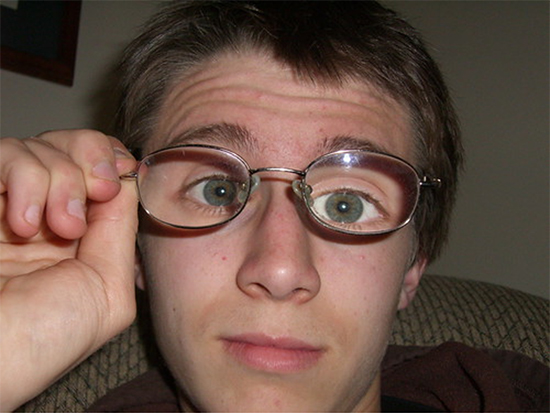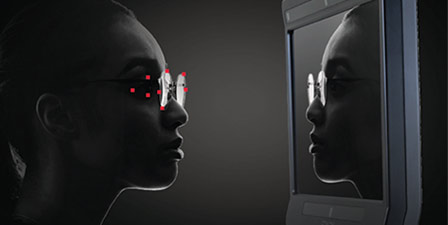 |
So, what should you be looking for when it comes to bridge fit? I like to think of myself as a bit of a “bridge whisperer” when it comes to looking at a face and having a fairly accurate gauge for what someone’s bridge width is. Gaining this skill will help you immensely in being able to style a patient and to create comfortable glasses for them. Also, you will want to fine tune your ability to spot a low or flat bridge and to have some frame options for these patients. Fortunately the industry has answered our call and there are several options today for frames with modified bridge fits, so it might take a bit of searching, but having these frame options available in your office can really be the difference between a happy patient and a patient who leaves because they can’t find anything that fits them properly.
I like to start with bridge evaluation as one of the first things I consider when I’m selecting frames for a patient to try on. I like to ask them questions about their current pair, to determine if they’re comfortable with what they have, or whether they have problems with what they’re wearing, and can we improve upon their prior experience. Then I ask the age-old question, “adjustable nose pads or no adjustable nose pads, which do you prefer?” I find that most people do have a preference one way or the other, however, at the end of the day, you, as the optical professional will have to make your recommendation based on what you’re seeing in terms of how the glasses are fitting that patient.
Next, we want to look at the obvious fit factors, if the frame is an acetate frame check for gaps or any light coming through from behind the frame at the bridge (unless the frame had a keyhole bridge design, in which case, we expect a gap at the top of the bridge). If there is any gapping or areas in which the frame isn’t making full contact with the bridge, you’re likely to end up with a product that constantly slides around for your patient, again an unhappy patient. Also, we need to have the patient do the Smile Test. If the patient smiles and the frame crashes into the cheeks, you may need to select either a frame with a shallower B-measurement, or one with more of a bridge build out.
If the frame has adjustable nose pads, are the pads generally located where the natural bridge falls, or will the frame require a lot of pad arm adjustment to sit properly? If the frame needs a lot of pad arm adjustment, you are likely looking at a finished product that puts excess pressure under the nose pads creating divots and soreness of the skin on the nose. In this case, selecting a different frame is in the patient’s best interest.
So, what do you do with a patient who has a low or flat bridge? Selecting a frame that has a generous bridge build out and a dropped bridge design will make a world of difference for these patients. Often these patients are so used to glasses sitting on their cheeks that they really appreciate when you take the time to find a frame that fits their needs. Often if you search under “alternative fit, or global fit” bridges, you will find just what you’re looking for.
It may seem like a tiny detail when it comes to all the things we do as opticians, but if we overlook bridge fit and make a pair of great looking glasses that the patient sees well out of, but the glasses don’t stay put or they’re not comfortable, you might still end up with an unhappy patient. So taking the time on the front end to help the patient select frames that fit their bridge properly does two things; 1) it establishes to the patient that you are the expert and that you are going to help them find a product that will work the way they want it to work, and 2) it ensures that you have a patient who not only looks great in the glasses you made for them, but they are comfortable, too. This happy patient is one who will return to you again and again, rather than one who keeps coming in for adjustment after adjustment and who still is not happy with the result. I’ll take the former, how about you?












